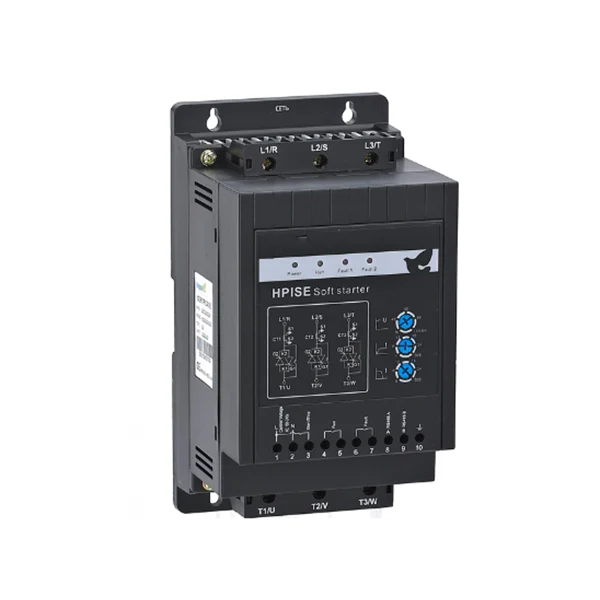Key Components of Control Electrical Systems
2024-05-20
Control electrical systems are essential for managing and regulating the operation of electrical devices, machinery, and processes in various applications. These systems use a combination of components and technologies to monitor, control, and automate electrical functions, ensuring efficiency, safety, and reliability.
Key Components of Control Electrical Systems:
1. Sensors and Actuators:
- Sensors: Detect physical quantities such as temperature, pressure, level, flow, and position. They convert these quantities into electrical signals.
- Actuators: Convert electrical signals into physical action, such as opening a valve, moving a motor, or switching a relay.
2. Controllers:
- Programmable Logic Controllers (PLCs): Industrial digital computers that control automation processes by receiving inputs from sensors and sending outputs to actuators based on programmed logic.
- Microcontrollers: Compact integrated circuits designed to perform specific control functions in embedded systems.
3. Human-Machine Interfaces (HMIs):
- Displays and Touchscreens: Allow operators to interact with the control system, monitor status, and input commands.
- Control Panels: Physical panels with buttons, switches, and indicators for manual control and monitoring.
4. Communication Networks:
- Fieldbus Systems: Industrial network protocols like PROFIBUS, Modbus, and CAN bus used for real-time distributed control.
- Ethernet/IP: Commonly used for integrating control systems with enterprise networks for data exchange and remote monitoring.
5. Power Supply Units (PSUs):
- Provide stable and reliable power to all components of the control system.
6. Switchgear and Protection Devices:
- Circuit Breakers and Fuses: Protect electrical circuits from overloads and short circuits.
- Relays and Contactors: Electrically operated switches used to control high-power devices.
Types of Control Electrical Systems:
1. Industrial Automation Systems:
- Used in manufacturing processes to control machinery, assembly lines, and robotic systems.
- Ensure precision, efficiency, and safety in production environments.
2. Building Management Systems (BMS):
- Control heating, ventilation, air conditioning (HVAC), lighting, and security systems in buildings.
- Enhance energy efficiency and occupant comfort.
3. Energy Management Systems (EMS):
- Monitor and control the distribution and usage of electrical power in industrial and commercial facilities.
- Optimize energy consumption and reduce costs.
4. Process Control Systems:
- Manage continuous production processes in industries such as chemical, petrochemical, food and beverage, and pharmaceuticals.
- Maintain product quality and consistency.
5. Smart Grid and Utility Control Systems:
- Regulate the generation, transmission, and distribution of electrical power in smart grids.
- Improve the reliability and efficiency of the power grid.
Benefits of Control Electrical Systems:
1. Increased Efficiency:
- Automate repetitive tasks, reducing manual intervention and human error.
- Optimize the performance of electrical systems, leading to energy savings.
2. Enhanced Safety:
- Monitor system parameters and detect faults, triggering protective actions to prevent accidents.
- Ensure compliance with safety standards and regulations.
3. Improved Reliability and Maintenance:
- Continuous monitoring of system health enables predictive maintenance, reducing downtime.
- Remote diagnostics and control capabilities facilitate quick response to issues.
4. Scalability and Flexibility:
- Easily scalable to accommodate growing or changing operational needs.
- Flexible to integrate with various devices and systems, supporting diverse applications.
5. Data Collection and Analysis:
- Gather data on system performance and operational parameters for analysis and optimization.
- Support decision-making through real-time insights and historical data trends.
Applications of Control Electrical Systems:
1. Manufacturing: Automating production lines, machinery control, and quality assurance.
2. Utilities: Managing power generation, distribution, and smart grid operations.
3. Transportation: Controlling systems in electric vehicles, railways, and traffic management.
4. Healthcare: Ensuring reliable operation of medical equipment and building systems.
5. Aerospace and Defense: Managing complex systems in aircraft, spacecraft, and defense installations.
Conclusion:
Control electrical systems are integral to the efficient and safe operation of modern electrical and electronic applications. By leveraging advanced technologies and components, these systems enable precise control, monitoring, and automation across a wide range of industries and applications. Properly designed and maintained control electrical systems can lead to significant improvements in operational efficiency, safety, and reliability.



